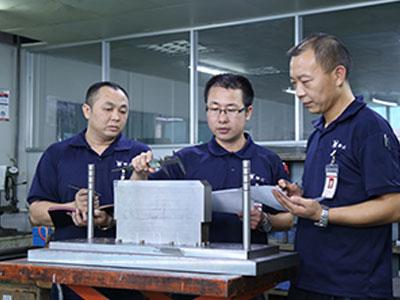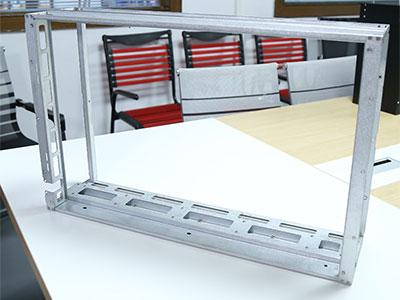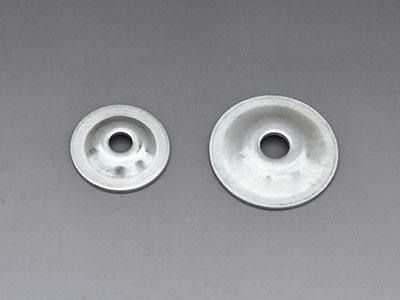- Home
- Materials
We use 5000, 6000 and 7000 series aluminum alloysfor the production of a variety of industry components. Aluminum processing parts are also included in our main products.
Aluminum alloy is light weight with a high corrosion resistance, as well as a high thermal and electrical conductivity. It is easy to weld and process into any shape using aluminum extrusion equipment. In addition,a number of surface treatments are carried out, including electroplating, electrophoresis, anodization, and more.
Aluminum alloy processing parts are currently widely used in a variety of industrial fields, including automotive parts, mechanical equipment parts, heat sinks, and electronic product chassis (such as server case, data connector chassis, and projector chassis).
Stainless SteelStainless steel is both stain and corrosion resistance, hard to deform, and features a high strength duplex grade and aesthetic appeal, leading to its wide usage in industrial fields. We use SUS316L, SUS304, SUS301, SUS430 and SUS201 stainless steel to manufacture structural parts, decorative parts, brushed panels, bases, bottom plates, brackets, handles, and more.
Carbon SteelCarbon steel is a commonly used, economical metal material with excellent processing properties and surface treatment properties. Different treatments, including welding, cutting, heat treatment, electroplating, and spraying are performed to meet product functional requirements. Carbon steel is used to make a variety of metal structural parts, cabinet enclosures and hardware products.
Carbon steel grades we usually use include Q215, Q235, SPCC, SECC, and SGCC. Depending on the surface treatment process, we can also use galvanized steel, aluminized steel, electrolytic steel, and tinplate as raw materials for a stronger corrosion resistance.
Copper AlloyCopper alloys feature an excellent electrical conductivity and have a certain elasticity, making them ideal for use in a variety of electronic industry components. There are many kinds of copper alloys, such as brass, copper and beryllium copper, all of which can be selected according to customer requirements.
Brass contains more phosphorus and is the most widely used copper alloy. It is relatively cheap.
Copper/Bronze: The purity of copper in bronze is higher than that of brass, the structure is denser, hard to break, and provides a better conductivity.
Beryllium copper: The texture is relatively thin, and the elasticity is better than other copper choices. It is an excellent selection for high precision products.
We use high-purity thin nickel sheets for the production of conductive contact sheets with a thickness of about 0.15mm to provide a lighter quality, better electrical conductivity and longer service life.
SilverThe conductivity of silver is the second highest, behind only gold. We often use silver ribbons to process conductive contacts in electronic products.
Nanocomposite MaterialNanocomposite material features an excellent compactness and high strength, with a lighter weight that does not affect the strength. The thickness of the sheet is generally below 0.15mm. What’s more, this material has excellent heat dissipation properties, making it ideal for use in electronic products and cooling fins, and more.




